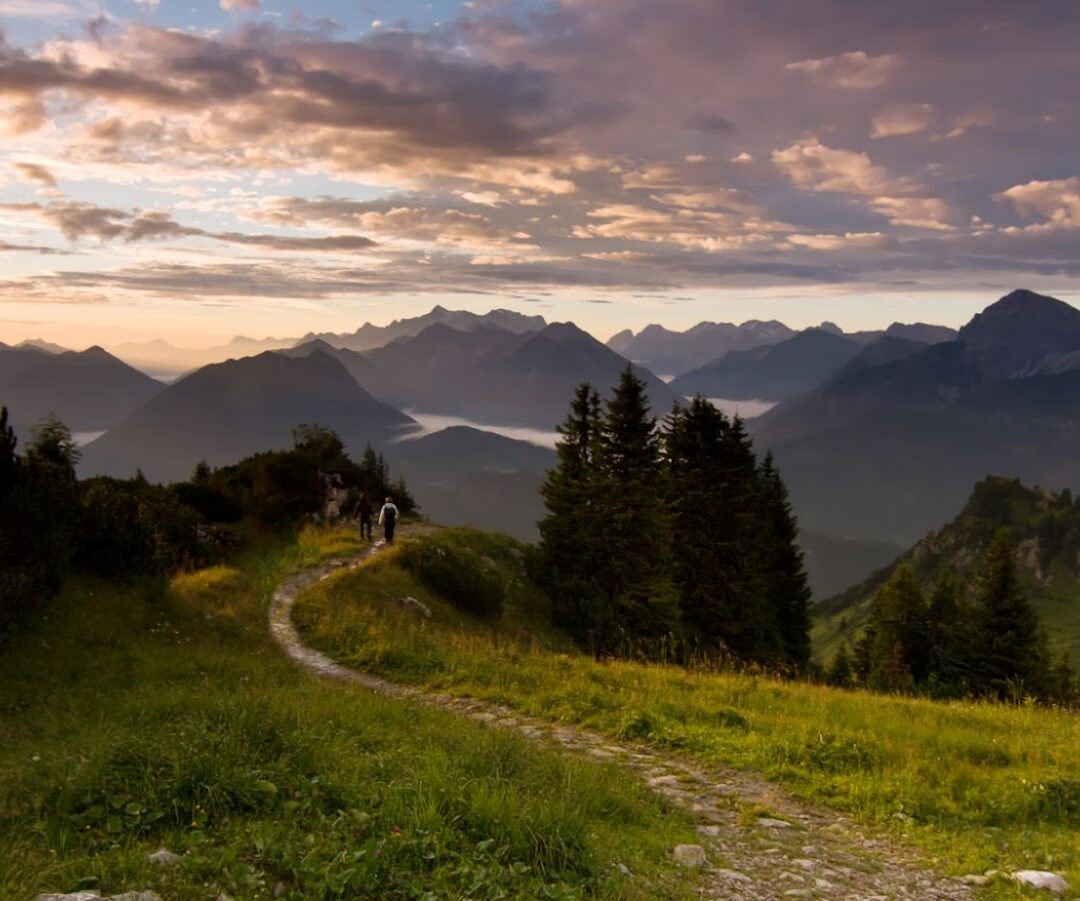The wilderness stretches before you, and you feel ready to take it on. The taste of exhilaration and exhaustion combine. Concocting a dopamine-filled heady mix of emotions that leave you wanting to answer the call of the trail.
Your boots, again and again, crunch against the loose ground. The rhythm of your heartbeat stoically matches the pace. The world melts away. It’s just you, the trail…and maybe 6 of your best hiking buddies.
If you’ve never completed a long-distance hike, the whole premise can be overwhelming and daunting. Where do you ever start (literally)? What trail should you complete? What gear do you need? How can you train yourself to be physically and mentally ready? All this and more must be part of your preparation before undertaking your first long-distance hiking trip.
These hikes aren’t just about the hike itself. Yes, there’s a physical sensation and endurance to overcome, but there’s so much more to it. The wilds, the mind games, the indelible memories that you create. But before you can get to that, it’s time to get planning.
What Is Long Distance Hiking?
Generally speaking, long-distance hiking is a hike that takes multiple days to complete. So that’s anything between a few days up to multiple weeks or months. For the sake of this article, we’ll be focusing on hikes that are around a week or more.
The main draw of long-distance hiking is to disconnect from the normal world completely. It’s a chance to leave the hustle and bustle of daily life and just immerse yourself in nature and physical activity. You can go at your own pace, take it all in, and enjoy the feeling of challenging yourself. Chances are you’ll see some breathtaking views and get an incredible feeling of accomplishment when it’s all completed.
There’s an almost endless list of trails that you can take on around the world. Arguably the most famous include:
- Appalachian Trail in the United States
- Camino de Santiago in Spain
- Westcoast Trail, Vancouver Island, B.C., Canada
- Pacific Crest Trail along the U.S. West Coast
- Tour du Mont Blanc in the Alps
The most important thing to bear in mind is that long-distance hiking isn’t a race. It might sound cliched, but it genuinely is about the journey.
Preparing Physically
Long-distance hiking is just walking, right? Anyone could walk for an extended period of time? That’s where people make mistakes and get themselves into issues. If you want to take on a long-distance hike you need to prepare your body.

Build Up Your Endurance
Endurance is a word synonymous with long-distance hiking. You need to be prepared to take on long periods of aerobic exercise that keep your heart rate pumping. Many people train by taking on more intense forms of aerobic training such as running, cycling, or swimming. These push your body harder but all you to get comfortable with the continuous requirements of your body.
There’s certainly no harm in building strength training too. Exercises such as squats, planks, and lunges are all great to build up core and leg strength that are essential when taking on long hikes. You can, and should, complete some shorter day hikes regularly too. These will help you to get used to the hiking mechanics and are a great way to break in new gear.
Researching And Choosing The Right Trail
This is one of the sections that most people enjoy as part of the preparation process. Picking where you’re going to complete your hike is exciting. Ask yourself some guiding questions such as “What scenery do I want to see?”, “What temperature do I want to hike in?” and “How far do I want to hike?”. Answer these, and you’ll begin to narrow down your options.
Once you’ve got a decent list of options, take to the internet and see what information you can find. Many hikers have shared their experiences. In fact, almost all of the famous trails have day-by-day video diaries from people that have hiked them. You can, of course, also invest in some good hiking guides.
Trail Picking Tips
- As a beginner, pick a trail that is achievable but still feels like a challenge. You definitely want to be sure you can complete your first hike.
- Always consider the time of year. Some trails will become inaccessible depending on the prevailing conditions.
- Check what permits and regulations there are for the trail. Without being forewarned, your hike might be scuppered before it even begins.
Gear And Equipment
It’s very tempting to buy as much flashy new gear as you can carry for your first hike. There is, however, the saying, “All the gear, no idea”. The gear is only useful if you use it properly and to the best of your ability. That said, some items you should consider taking with you are:
- Appropriate clothing for the conditions.
- Well-fitting, broken-in footwear that you’re comfortable wearing.
- Backpack and rain cover – we’d advise at least 50 liters for a week-long hike.
- Lightweight and durable tent with a sleeping bag and pad.
- Water carrier, filtration, and food supplies.
- Map and compass – be sure you’re aware of the map scale, and if it’s not what you’re used to use a conversion such as 1/4 inch to mm so you can understand it in your usual way of measuring.
- Headlamp
- First-aid kit
- Multitool
- Whistle and an emergency foil blanket.
- Sunscreen and insect repellent
- Trash bags – so you can adhere to Leave No Trace.
Key Takeaways
Planning your first long-distance hiking trip might be as much of a journey as the hike itself. It is certainly a long road and one that’s worth traveling. The more prepared you can be before you begin the hike, the more likely it is that you’ll enjoy it.
It will feel intimidating as you lace up your boots and pull on your pack for that first day, but as you sit back and take in everything you achieved at the finish line, you’ll appreciate everything you did to prepare yourself for the endeavor.
- Failure to prepare is preparation for failure.
- Every trail is different in terms of physical exertion and gear requirements.
- The more you’re able to train beforehand, the more enjoyable the actual hike will be.




